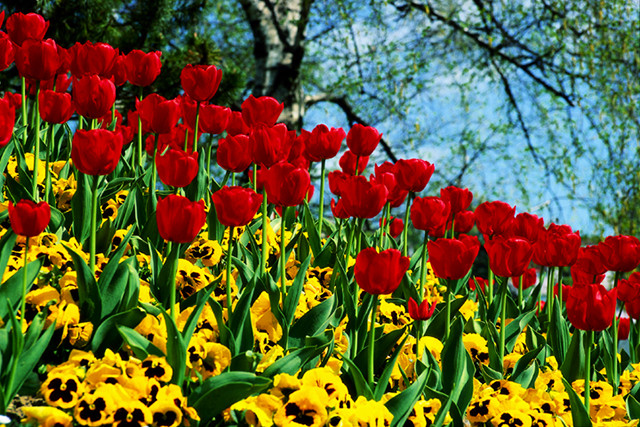
by John Copeland Thursday, April 21, 2016

As a day, May 1 has probably had more festivals and events associated with it than any other day of the year. Credit: Copyright Corbis Images.
May is named for Maia, the Greek goddess of fertility, and eldest of the seven Pleiades sisters. Orion, the hunter, after meeting the sisters, was so enamored of the young women that he pursued them relentlessly. Taking pity on their plight, Zeus changed the sisters into a flock of doves and set them in the heavens as a striking constellation of stars in the northeast quadrant of the sky. Maia’s festival was held at the beginning of May and celebrated with spring flowers and blooms.
As a day, May 1 has probably had more festivals and events associated with it than any other day of the year, and has been celebrated around the world for millennia. In pre-Christian Europe, May Day was called Beltane by the Celts and other ancient Europeans; it was the second cross-quarter day of the year, situated halfway between the spring equinox and summer solstice.
The true essence of May Day was focused on the explosion of life that unfolds as summer nears. May Day’s long and notable history provides a great example of the collision of paradoxical elements related to many of our holidays.
May Day was an occasion for revelry celebrating fertility and the start of summer. On May Day’s Eve, it was once customary to light bonfires on hilltops. Cattle were driven between the fires to ensure their fertility and a bountiful harvest. Men and women ran through the bonfires too, for cleansing and good luck in the year ahead. Maypoles were raised in villages. The poles were brightly painted and hung with greenery and ribbons. Unmarried men and women of the village danced around the pole holding on to the ribbons until they became entwined with their hoped-for new love.
In Colonial America, the Puritans frowned upon May Day, and as a holiday it has never been celebrated with as much enthusiasm in the United States as it is in other countries. However, even in 20th-century America, we did have a May Day tradition that was still practiced when I started elementary school — and is still practiced in some locations today. We would make colorful paper baskets and fill them with spring flowers. On May Day morning, we would run around our neighborhood placing the baskets on front doors, ringing the doorbell and yelling, “Happy May Day,” as we dashed away.
But, we are forever changing the meanings of our seasonal holidays, and, thus, May Day itself has been reborn.
The day began shifting away from its associations with nature’s fertility and agriculture during the Industrial Revolution. Nineteenth-century American workers began to recognize the deteriorating working conditions in the rapidly industrializing workplace. On May 1, 1886, across the country, workers and labor groups went on strike, demanding that the standard workday be shortened to eight hours.
The protests were not immediately successful, but the organizers continued to press for reform each May 1. Their efforts proved effective down the line and the eight-hour workday eventually became the norm. Labor leaders, socialists and anarchists around the world took the American strikes and their fallout as a rallying point, choosing May Day as a day for demonstrations, parades and speeches. The day came to be recognized as epitomizing the central tenet of all socialist movements: power to the workers.
When the communists took control in Russia, they instituted May Day as the day to celebrate the triumph of the worker. The nationalistic parade became the centerpiece of their May Day celebrations. Little did those who paraded in Moscow on May Day during the Soviet period realize the irony that their major holiday first took root in America. In America, in a reaction to communism, the first Monday in September was instead set aside to honor American labor.
For most Americans, May Day has become an obscure holiday — one that many associate either with a distress call or the once-feared specter of communist domination. If there is any connection between the May Day of old — a day on which people participated in ceremonies dedicated to stimulating the regeneration of life’s processes — and modern May Day as a holiday that anticipates the rebirth of a better world community, maybe it is the idea that human action is necessary in the reinvigoration of life’s processes.
© 2008-2021. All rights reserved. Any copying, redistribution or retransmission of any of the contents of this service without the expressed written permission of the American Geosciences Institute is expressly prohibited. Click here for all copyright requests.